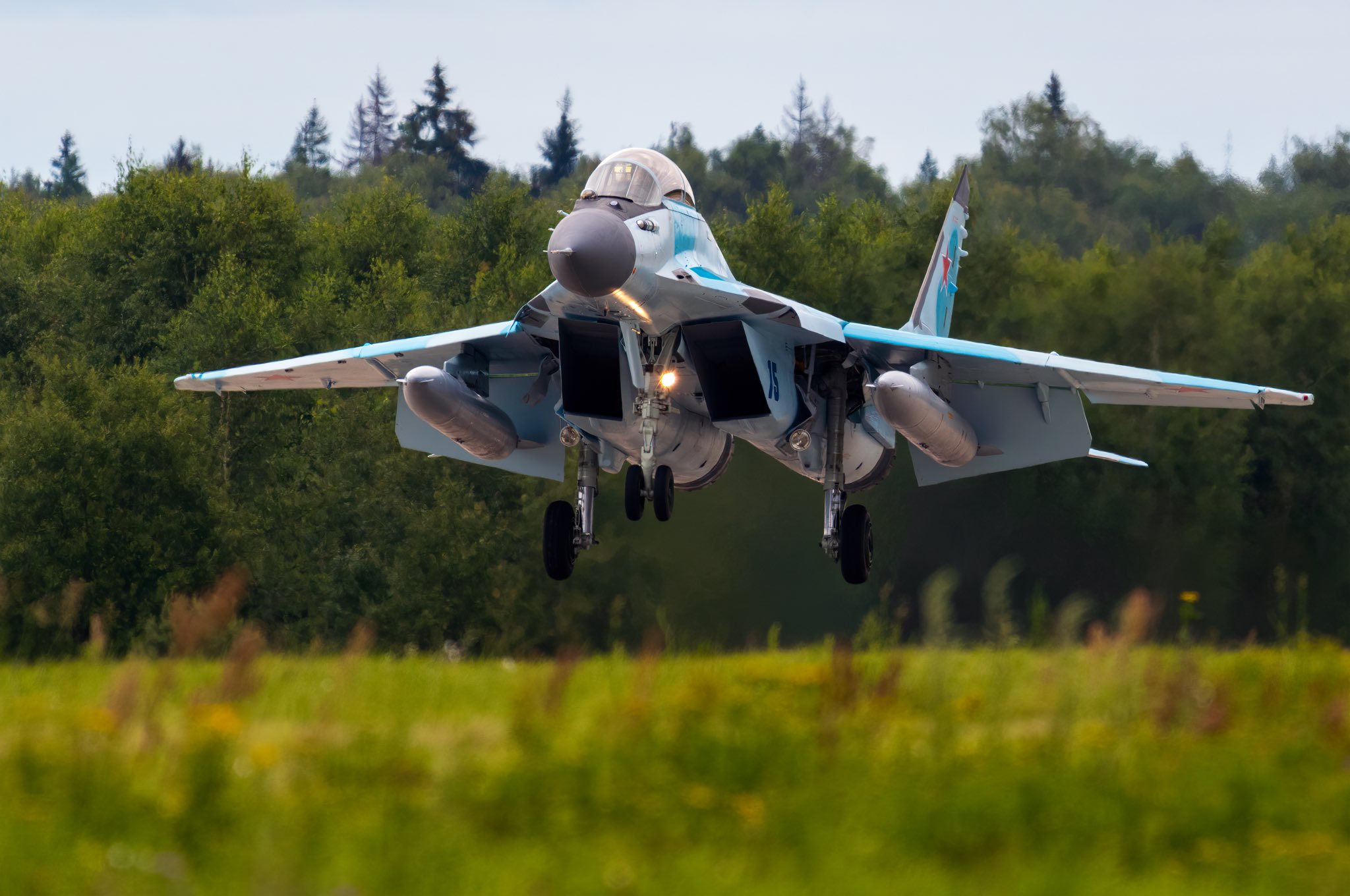As the Indian Air Force (IAF) looks at another 10-12 years for the procurement of 114 multirole fighters to fructify, the service’s experience with a famous Russian jet provides a compelling option for the government to consider.
Concorde 2.0? Lockheed Martin Spices Up Race For Supersonic Commercial Jets With An Enviable Design
Land, Air & Sea: US Navy To Deploy Its ‘Most Potent’ Drones To Track Every Movement Of Iran — Watch
The $20-billion Multi Medium Role Combat Aircraft (MMRCA) deal is yet to be notified in a Request for Proposal (RFP), with only a Request for Information (RFI) being issued so far.
The technical, commercial bid evaluation, field trials, cost negotiation, finalizing Indian partnerships with foreign Original Equipment Manufacturers (OEM), and the first fighters to reach India will take no less than 10 years. The remaining MiG-21 Bisons and MiG-27s will have completely retired by then.
This will be somewhat compensated with the full complement of 36 Rafales that will have been operational by 2023. However, India will still be down to mere 30 squadrons, much less than the ideal strength of 42, to effectively tackle a “two-front” simultaneous war with Pakistan and China.
The IAF has also ordered 83 Tejas Mark-1A jets (that have 43 improvements), of which only 12 have been delivered so far. These will be inducted between 2024 and 2028.

Besides, the service has expressed willingness to buy the Tejas Mark-II, only if it is an entirely new aircraft with much better avionics, electronics, radar, weapons capabilities, and general performance characteristics that put it in the 4.5-generation category.
This entirely depends on the Aeronautical Development Establishment’s (ADE) of the Defence Research and Development Organisation (DRDO) and the state-run Hindustan Aeronautics Limited (HAL) capability to meet the IAF’s demands.
With this very eventuality in mind, the IAF in February 2019 considered 21 “mothballed” (unassembled) MiG-29s lying in Russia with their bare airframes since the late 1980s.
The Cabinet Committee on Security (CCS) in January this year approved the 21 mothballed MiG-29s and 12 additional Su-30 MKIs – to make up for the 9 lost in crashes over the years – to stem the depleting aircraft strength. Moreover, it also approved the upgrade of 59 such jets already in service with the IAF as a part of INR 7,418 crore project.
Costlier Than A Ferrari, Why This American Fighter Jet’s Helmet Costs A Bomb?
The MiG-35
The MiG-35 is a highly advanced version of the legendary MiG-29 Fulcrum, the jet that had become a symbol of Soviet aerospace prowess before the Sukhoi-27 series. Better airframe for higher payload and multi-role ground strike functions, the plane is in the $30 million to $40 million price range.
This can be further reduced if India goes for a direct bulk contract that would include two off-the-shelf purchases and the remaining to be manufactured under a Transfer of Technology (ToT) clause.

The MiG-35, which was part of the original MMRCA deal and is also being pitched for the 114 jet procurement tender, has an Active Electronically Scanned Array (AESA) radar; rigged to fire Kh-38 cruise missile and R037M air-to-air missile and a Full Authority Digital Electronic Control (FADEC) enabled RD-33 MK engine.
The new RD-33 is an improvement over the problematic RD-33 that powers the Indian Navy’s MiG-29Ks. Moreover, it is thrust-vectoring capable, has an Infrared Search and Track (IRST), and a full-glass cockpit that can be fused to a Helmet Mounted Display (HMD), thus putting it in the Generation 4++ category.
The original MiG-29s that began reaching India from 1987 onwards, had as per the contract, an option clause to license manufacture 150 aircraft, which was never utilized. This – along with the similar instance of ignoring an option clause for local manufacture of the Mirage 2000 – is a decision many IAF officers rue to this day, given the techno-industrial benefit India’s domestic manufacturing ecosystem would have acquired.
In the past, Russians have expressed their preference for HAL as a joint production partner and this saves them the effort to select an Indian company. A former IAF Wing Commander-rank officer says that developing tactics, understanding the plane, and maintenance will be easier and faster since India has already operated it for nearly three decades.

“Moreover, bulk order will also streamline spare part procurement and cut costs. Russian and Indian technical forums have been officially interacting during the DefExpo and Aero India to address the chronic problem with sourcing spare parts of Russian systems. The platforms could be activated to solve the issue,” he said.
US, India Ink Landmark Pact To Develop Next-Gen Drones In A Whopping $20B Overall Military Contract
Officials also said if the HAL’s production timelines improve as planned, the MiG-35 can command an operational availability rate of at least 70%.
Some experts, however, claim that like the Sukhoi-30s, the MiG-35 too will be merely integrated into Completely-Knocked Down (CKD) kits coming from Russia, with no local production of components.
Russia itself has not inducted it, which leads to problems with spare part production. It has ordered just 6 MiG-35s, ordered in August 2018. Its air force is rather receiving heavier numbers of the Su-30SM and the highly advanced Su-35 Flanker ‘S’.
- Parth Satam is a Mumbai-based journalist who has been covering India’s defense sector for more than a decade. He maintains a keen interest in defense, aerospace and foreign affairs and can be reached at satamp@gmail.com
- Follow EurAsian Times on Google News





